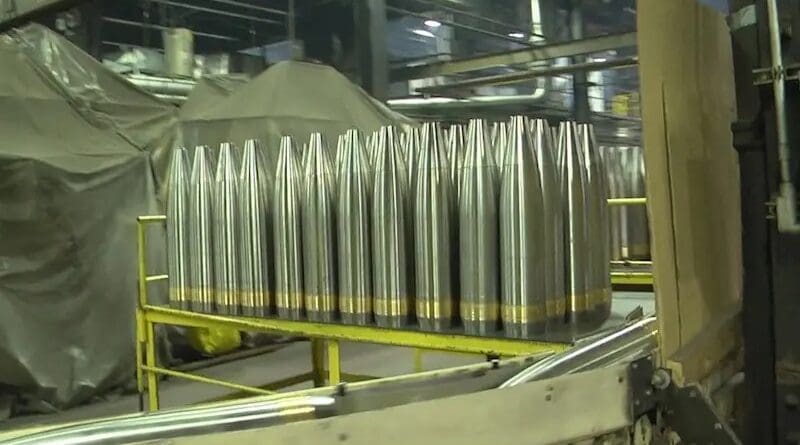Helping Ukraine Is Forcing The United States To Produce More Weapons – OpEd
By Rebeccah L. Heinrichs
Since the Cold War, the United States’ manufacturing base has atrophied severely. Then Russia’s war against Ukraine laid bare America’s need to reinvest in its defense industrial base.
Because of the need for the US to deliver weapons to vulnerable allies, Congress now has to purchase weapons quickly, as well as more responsibly and cost-effectively. These changes will improve the US military’s ability to deter a major power war.
The numbers do not lie. Douglas R. Bush, the assistant secretary of the Army for acquisition, logistics, and technology, said that the US is currently producing 24,000 artillery rounds per month and is on track to produce more than 80,000 rounds per month next year.
And according to William LaPlante, the under secretary of defense for acquisition and sustainment, the United States could make 100,000 shells per month by 2025, but only if Congress passes a supplemental.
Below are several more highlights that show how supporting Ukraine is pushing the American defense industrial base to produce high quantities of weapons in a short amount of time.
Camden, Arkansas. Arkansans employed by Lockheed Martin are preparing to boost production of the High Mobility Artillery Rocket System (HIMARS) from 48 to 96 units per year. HIMARS’s success in Ukraine’s fall 2022 counteroffensive has inspired America’s allies to increase their purchases. Poland, for example, finalized a deal to purchase 18 new HIMARS units in February 2023.
Lima, Ohio. Ohioans employed by General Dynamics refurbish and upgrade Abrams tanks to send to Ukrainians. The Lima plant built 15–20 armored vehicles per month prior to the war in Ukraine but can now double that number to meet orders. On top of the 31 Abrams slated for Ukraine, General Dynamics is preparing to build an updated version of the tank for export to Poland and other allies.
Troy, Alabama. Alabamians produce Javelins. The Alabama facility that produces Javelin anti-tank guided missiles announced in May 2022 that it would increase production from 2,100 units per year to 3,960 by 2026. American producers have also agreed to allow the systems to be produced outside of the US to meet global demand.
Tucson, Arizona. Arizonans manufacture the Stingers. After providing Ukraine about 1,500 Stinger shoulder-fire anti-aircraft missiles by January 2023, the US Army expects to increase production to 60 a month by 2025—up 50 percent from the current rate. The ramp-up comes amid growing demand for the missile after it played a vital role in repelling Russia’s attack on Kyiv at the outset of the war.
Middletown, Iowa. The Iowa Army Ammunition Plant, which packs 155mm artillery shells with explosives, is slated to receive $1.2 billion in upgrades over the next two years thanks to US support for Ukraine’s defense. It plans to expand its current workforce of over 800 people because of the additional demand. The plant now produces around 22,000 shells per month, roughly twice what it produced at the beginning of 2022.
Scranton, Pennsylvania. Pennsylvanians are producing artillery shells. The steel bodies for the crucial 155mm artillery shells are produced in General Dynamics facilities in Scranton, Pennsylvania, and nearby Wilkes-Barre. The US has set a goal to produce 100,000 shells per month by 2025. To achieve this, the Scranton facility has received $120 million in modernization plans as the Army seeks to open a new production line in the plant by 2025.
- About the author: Rebeccah L. Heinrichs is a Hudson Institute Senior Fellow and Director, Keystone Defense Initiative
- Source: This article was published by the Hudson Institute

